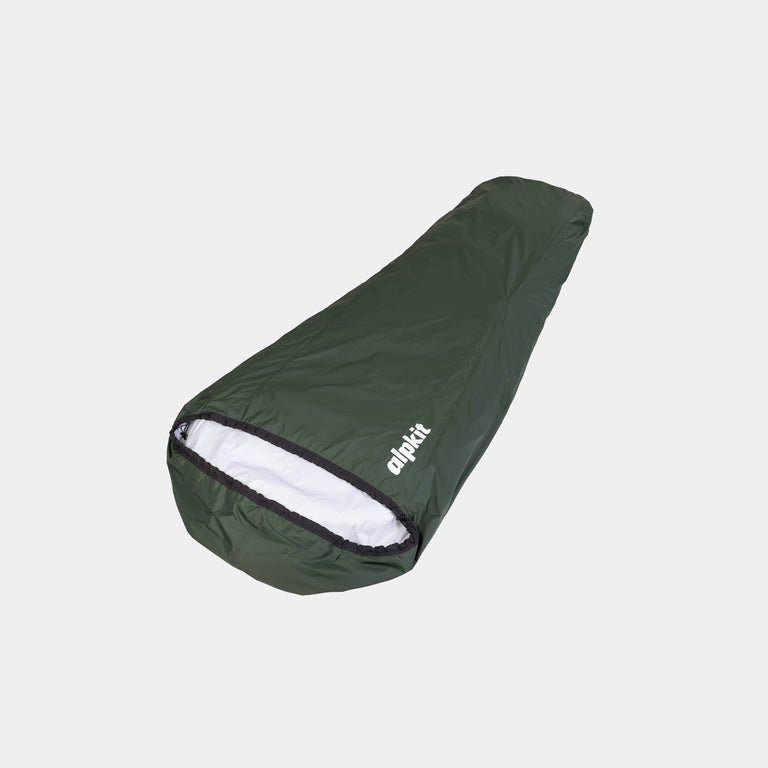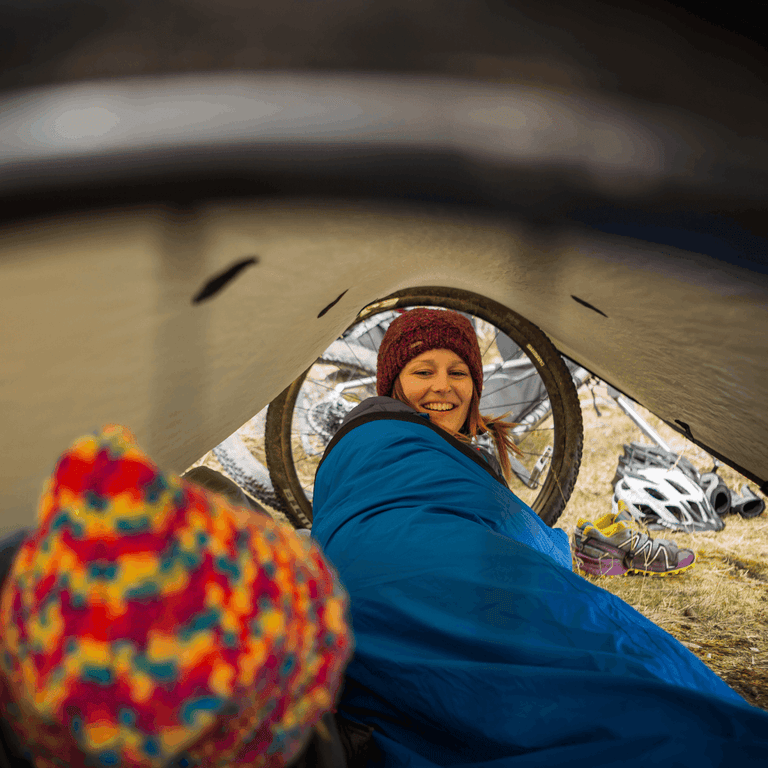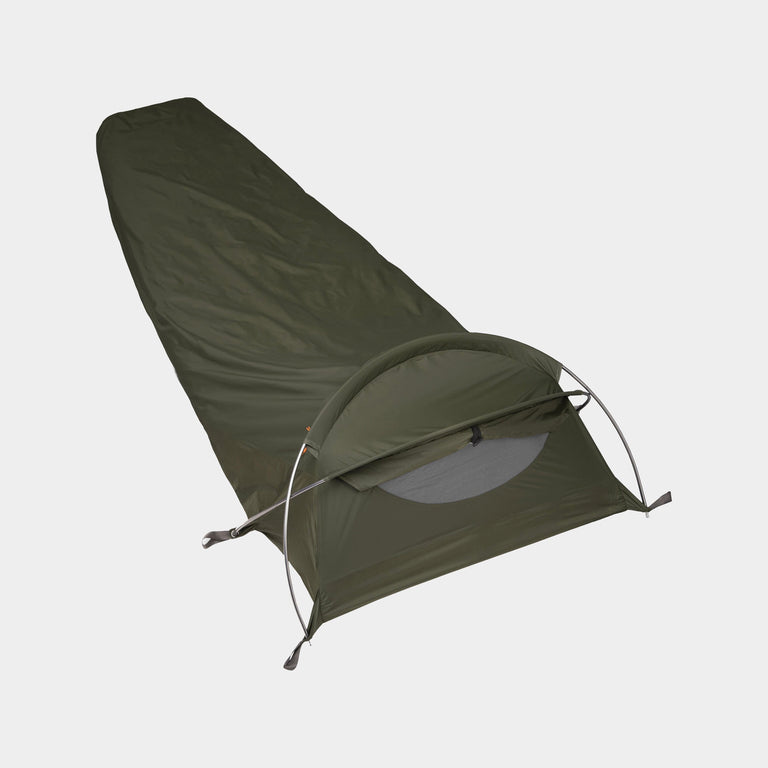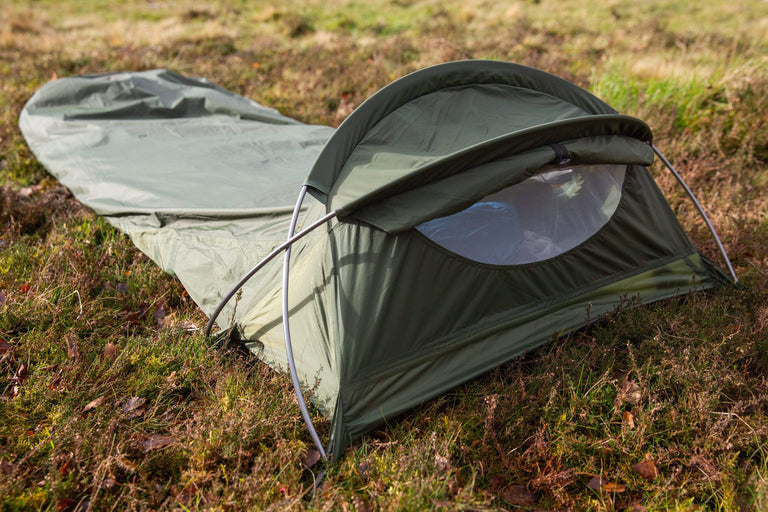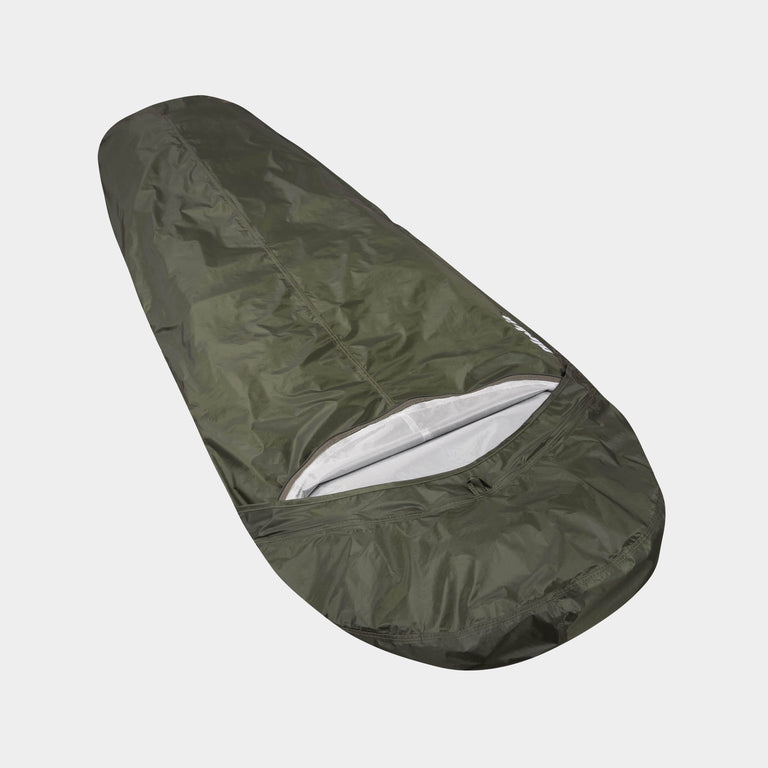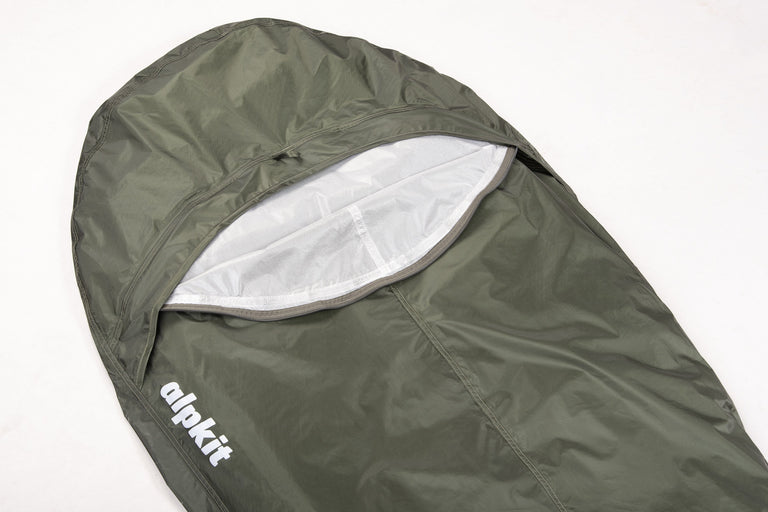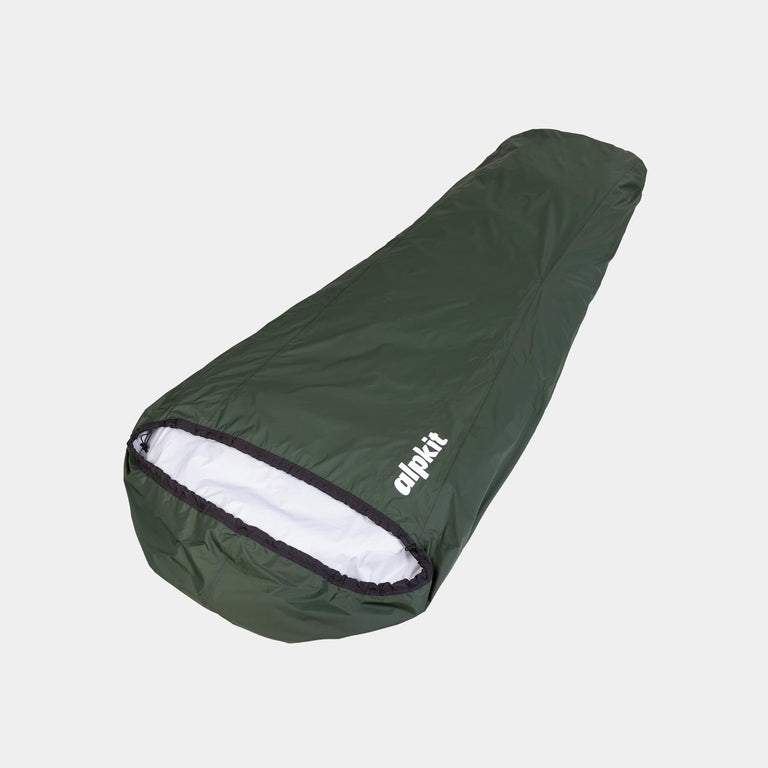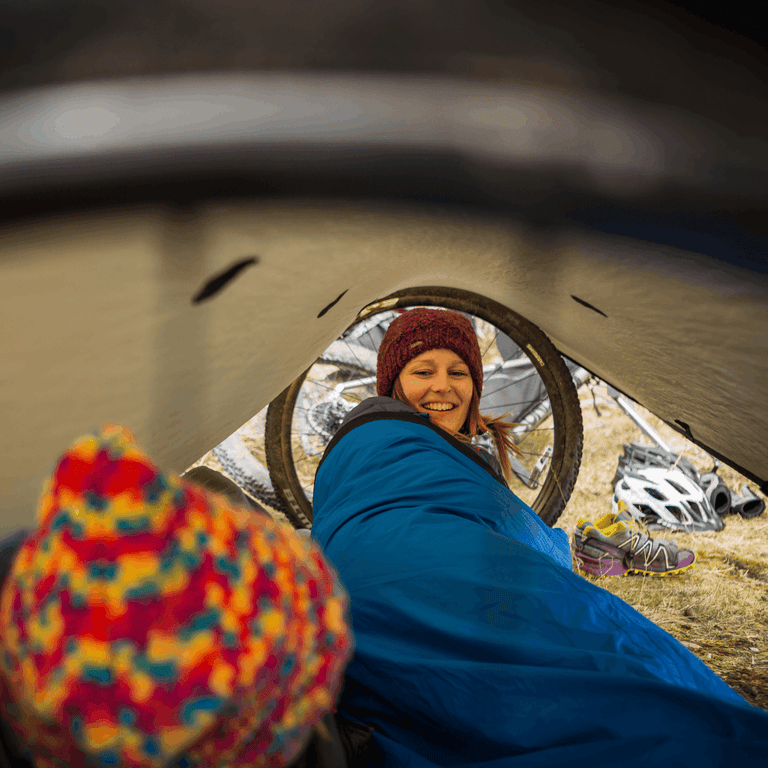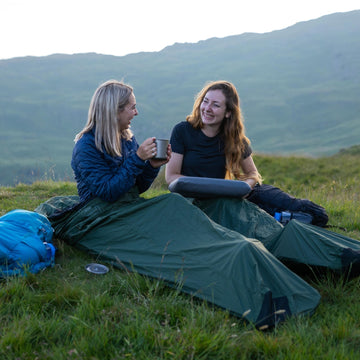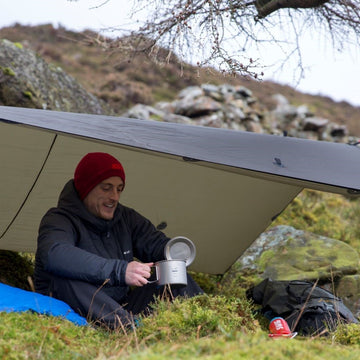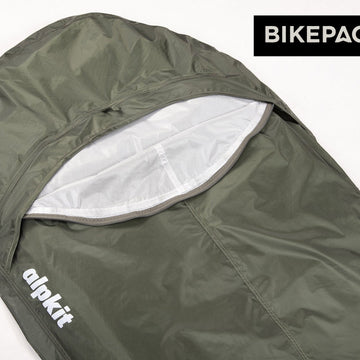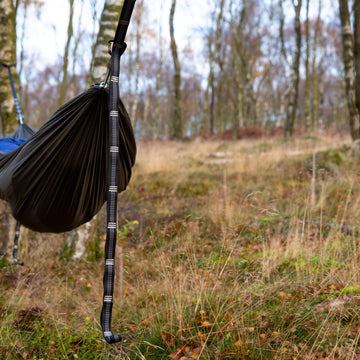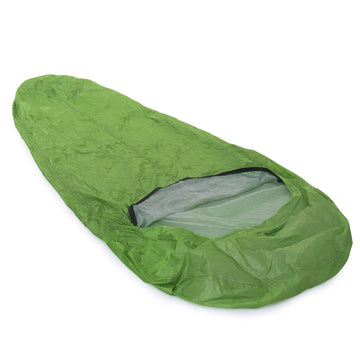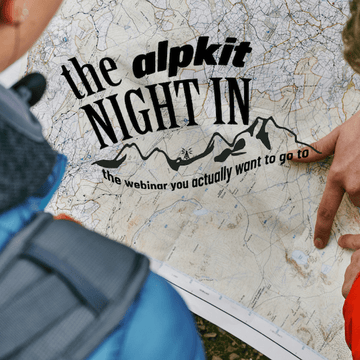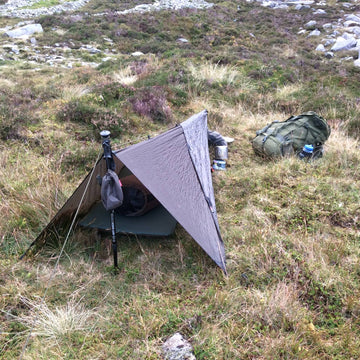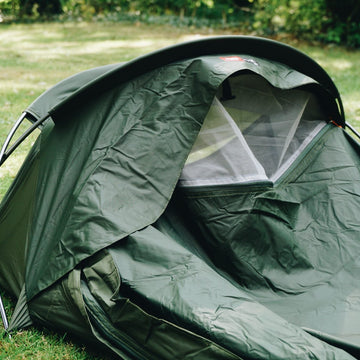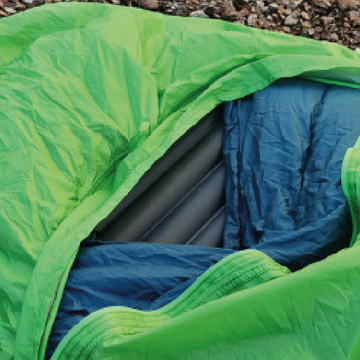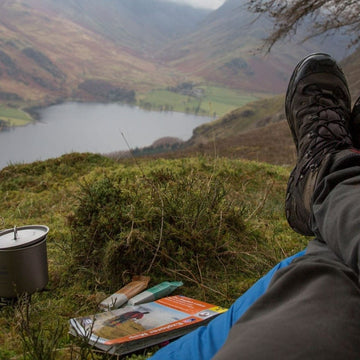
Rain doesn’t have to ruin your bivvy. Learn how to stay dry and warm with smart gear, site choices and setup techniques.
How can you possibly stay dry in the rain when you are bivvying? It is a fair question. Unlike a tent there is no roof over your head, no walls around your sides and no door you can close. Let's unpack this conundrum.
As much as bivvying sounds like a good idea, the threat of rain is enough to push all but the most dedicated bivvyists to reach for their tents. Whether you have been caught out and have to sit out a night of rain, or you have deliberately chosen to do it, there are some equipment and strategies you can employ to make your night drier.
One person who put our kit to the test was wild camper and YouTuber WildBeare. Choosing to bivvy out in the rain for 12 hours to see how effective it would be in an emergency situation. Whilst most people would not go out of their way to sleep in the rain, it is good to know the kit is proven.
Let's introduce the 2 basic pieces of bivvy kit needed to stay dry in the rain:
What is a bivvy bag?
A bivvy bag is just like a waterproof coat for your sleeping bag.
What is a tarp?
A tarp is a sheet of fabric that can be used to create a shelter.
Choosing a bivvy bag
For these to be effective the bivvy bag needs to be waterproof and it needs to be breathable, just like your waterproof coat. It needs to be waterproof so rain cannot get in from the outside, and breathable so that any moisture generated while you sleep can get out.
- Waterproof / Breathable fabrics: Look for materials that allow moisture from inside the bag to escape while keeping rain out, to reduce condensation.
- Seam sealing: Fully taped seams prevent water from seeping through stitches.
- Effective hood closure: To stop rain getting in your sleeping bag.
Let's look at some options starting with the simplest to the most tent like:
- Plastic bag: usually orange and used only for emergencies. Made of heavy plastic, it is not breathable and not designed to be reusable. If you spend any amount of time in one of these bags condensation will build up inside the bag, which will eventually soak into your sleeping bag. You may be dry from the outside, but you are getting wet from the inside.
- Breathable and waterproof bivvy bag with a simple drawcord style hood: Normally made of Polyester or Nylon and laminated with a waterproof / breathable layer. Our Hunka bivvy bag has been the go to bag in this category for donkeys years.
- Breathable and waterproof bivvy bag with zipped hood: The zipped hood gives added protection against the elements, however you should never fully seal it. Our Kloke bivvy bag fits in this category, and is one of the lightest waterproof, breathable bivvy bags you will find.
- Hooped Bivvy: Same as the above but with the addition of a hoop to hold the bivvy bag away from your face. Not quite the luxury of a tent, but you are heading in that direction. Our Elan hooped bivvy has proven it's worth to solo backpacker and bikepackers.
Advantages of using a bivvy bag in the rain
Your bivvy bag is a protective outerlayer. It protects your sleeping bag from rain, wind, dust and mud.
- Keeps you dry: Just like your coat a bivvy bag is made from waterproof fabric with taped seams to provide a waterproof outer shell to your sleeping bag.
- Keeps your sleeping bag clean: A bivvy bag also provides a barrier to keep your sleeping bag clean. It is much easier to wash and dry a bivvy bag than it is a sleeping bag.
- Packing protection: Pack your sleeping bag inside your bivvy bag for extra protection when it is in your sack.
- Safety: Take your bivvy bag with you on day hikes and use it as your emergency bivvy bag.
Choosing a waterproof bivvy tarp
Here are your options starting from the cheap and inappropriate to something approaching the familiarity of a tent, but not quite.
- Builders tarpaulin: Heavy, cheap and not very durable. Normally made from polyethylene, the attachments are not really designed to be buffeted in the wind and tears easily.
- Durable polyester square or rectangular tarps: Fitted with multiple attachment points around the outside, this makes a great value tarp for bivvying or hammocking. Our 3 square 4 square tarps fall into this category.
- Lightweight nylon square or rectangular tarps: Usually fitted with multiple attachment points around the outside, and several attachment points on the surface of the tarp called lifters. Our Rig range of tarps fall into this category. Strong and lightweight, these are great for saving weight and staying dry on committing adventures in 3 sizes up to 8 people.
- Lightweight nylon/polyester diamond or eccentrically shaped tarp: This more sophisticated shape will allow you to sculpt more refined shapes, helping you to shed rainwater and deflect winds.
- Pyramid style tarp: Designed to work with a central pole, usually a trekking pole to give a tall pyramidical tent-like structure. This can be useful if you know you will have no where to suspend your tarp and provides 360˙ protection. Our Tarpstar pyramid tarp tent accommodates 1 - 4 people.
Advantages of using a bivvy tarp
Strictly speaking you do not need a tarp to bivvy, however using one has some important advantages when it is raining or is windy.
- Rain protection: A tarp provides a roof over your head keeping you shielded against direct rainfall. This means you can sleep with your bivvy bag hood open, knowing you are not going to struggle to keep your face dry.
- Wind protection: A tarp can be set up to deflect the wind, reducing windchill and protecting you from the worst of any horizontal rain.
- Ground cover: If your tarp is large enough you can tuck it under your sleeping mat as a groundsheet.
- Changing area: Having a roof over your head, and sides to block the wind make getting in and out of your bivvy bag much more comfortable.
Creating a dry sleep system
To maximise your dry night you should layer your sleep system effectively, and stow away your kit in waterproof drybags:
- Sleeping bag and liner: Choose a sleeping bag suitable for the temperatures you'll encounter and consider a liner for added warmth and protection.
- Sleeping pad: An insulated pad not only adds comfort but also provides a barrier from the cold, damp ground.
- Waterproofing extras: Pack a small travel towel to dry off any water that might get in, and use waterproof sacks for your sleeping bag and clothes to keep them dry even if your pack gets wet.
Bivvy setup
Choosing the right bivvy spot and setting up properly can greatly reduce water exposure:
- Elevated ground: Look for slightly elevated areas to avoid pooling water.
- Natural cover: Use trees and other natural features to shield your bivvy spot from rain and wind.
- Makeshift shelter: A lightweight tarp rigged above your sleeping area provides additional protection from the rain. Get your tarp up first, keep the rain off your head, and then sort out the rest of your tarp system and get yourself a brew on.
Singing in the rain
Rain is a fact of life, but it is not going to stop you bivvying. With the appropriate waterproof gear, a thoughtfully layered sleep system, and strategic campsite selection and setup, you can stay dry and comfortable through the night.

